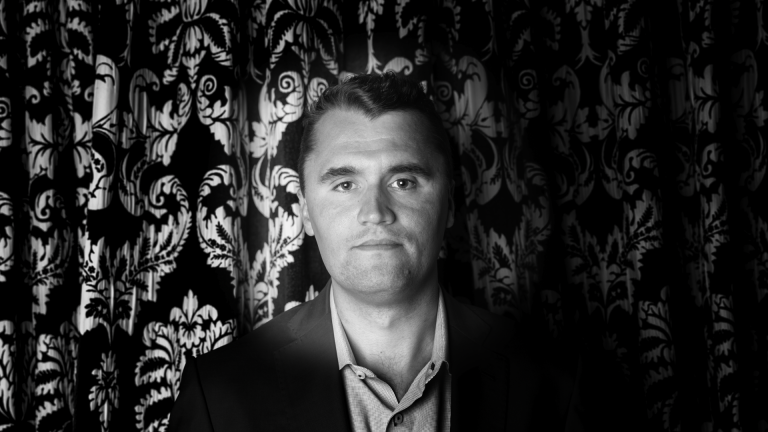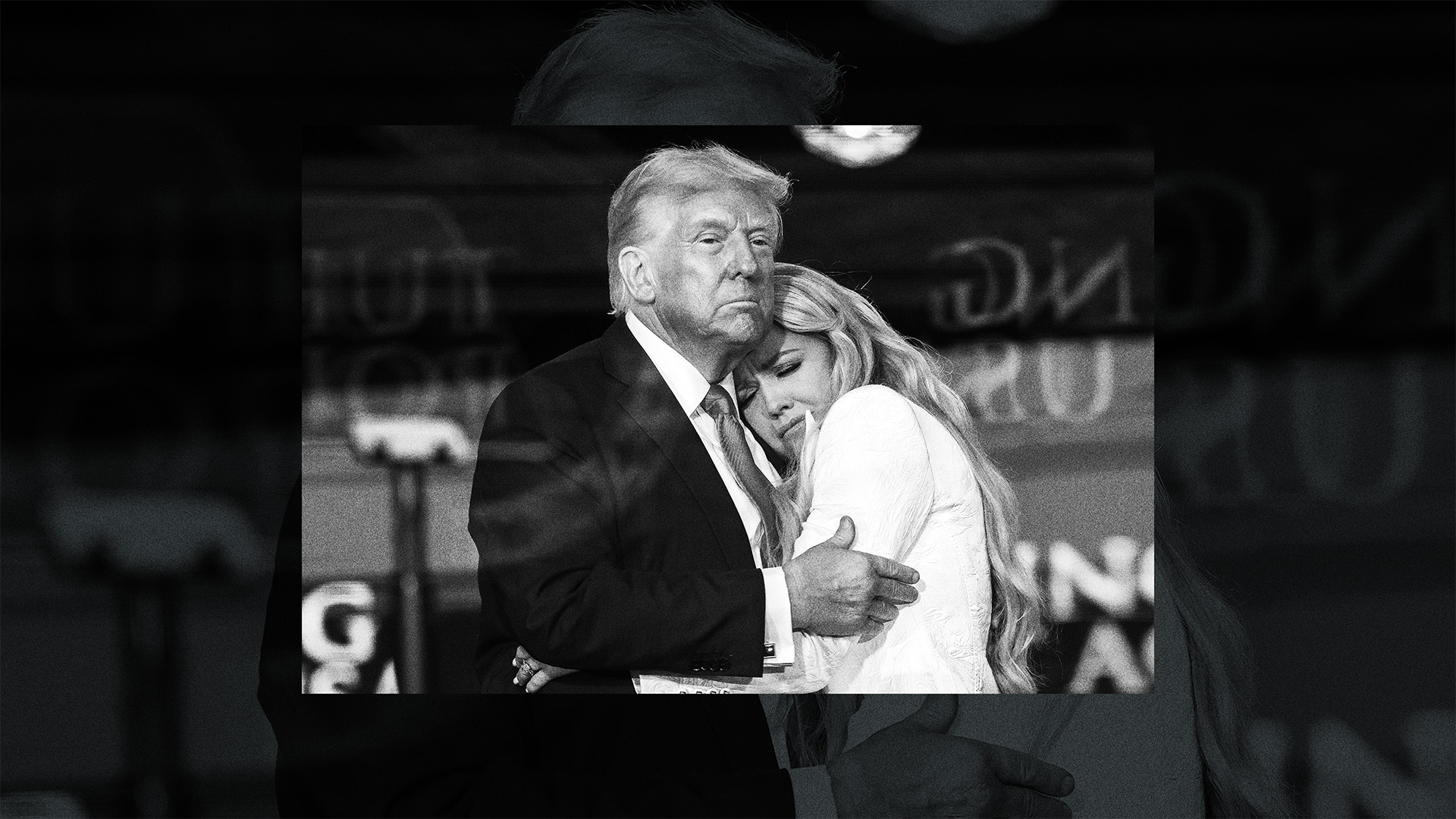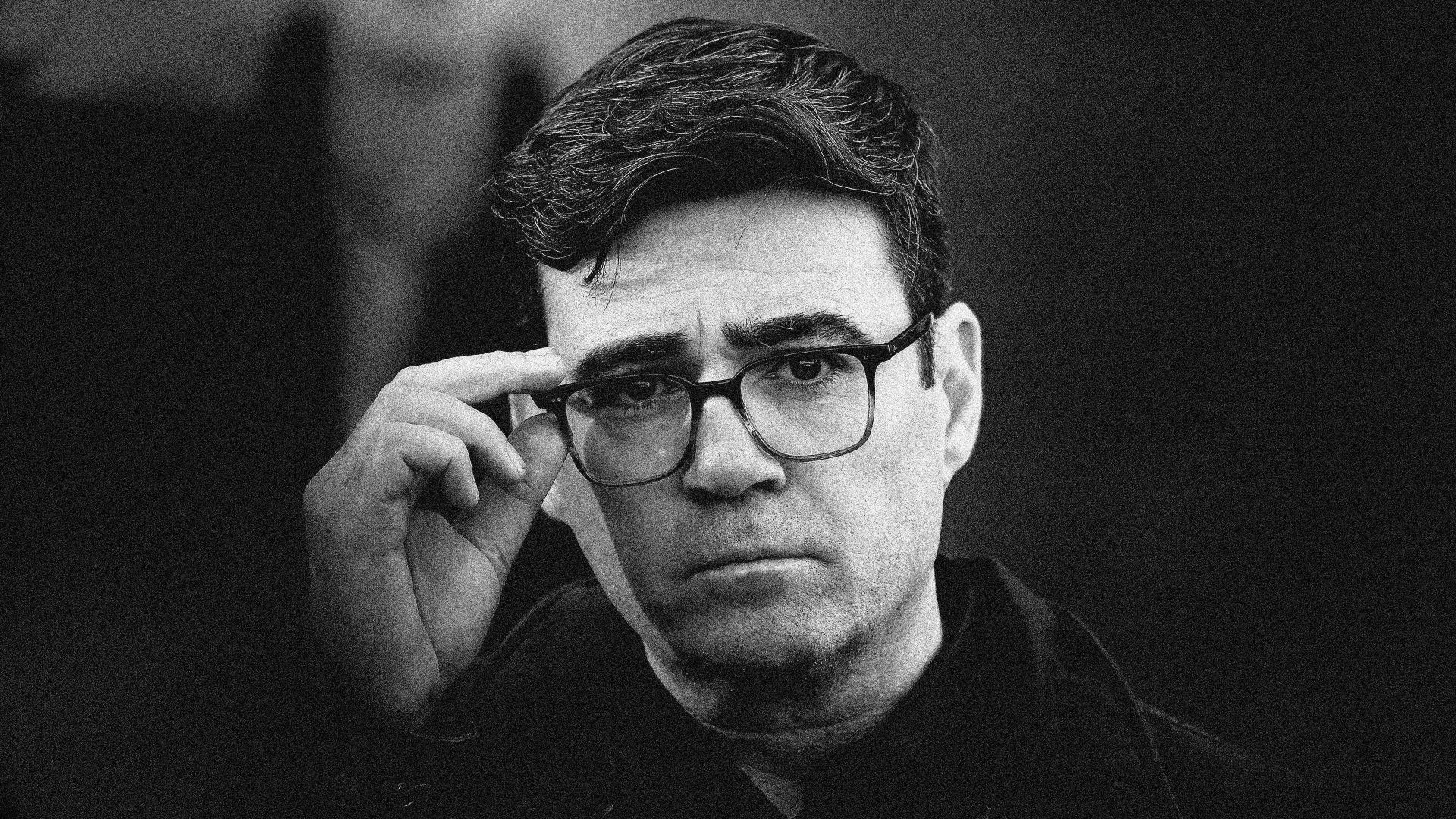Early death is a force multiplier of myth: James Dean was only 24 when he died; Marilyn Monroe and Diana, Princess of Wales, were 36; Che Guevara was 39, as was Martin Luther King Jr; John F Kennedy was 46; his younger brother Robert only 42.
And now Charlie Kirk, a mere 31 years old when he was killed on September 10 at Utah Valley University, has bequeathed to MAGA its first true myth and an extraordinary surge of energy. That much was clear from Sunday’s immaculately choreographed memorial service at State Farm Stadium in Glendale, Arizona.
Tens of thousands were already in line at dawn to clear the strict security checks. And once the stadium reached its 71,000 capacity, an additional 19,000 filled the nearby overflow arena. Every senior member of Donald Trump’s Cabinet was there to honour a man who never held political office. Elon Musk appeared to be reconciled with the president. Steve Bannon, former White House chief strategist, described the memorial as a “MAGA state funeral”.
No assassination in history has been witnessed so quickly, by so many, so graphically, from so many angles. Abraham Zapruder’s 8mm film of the shooting of JFK in November 1963 was not seen on network television until March 1975. Contrast the astonishing speed with which the moment of Kirk’s death was viewed by hundreds of millions on social media.
JD Vance, fast to intuit the moment’s political significance, flew on Air Force Two to transport Kirk’s body back to his home state of Arizona. On September 15, the vice-president hosted The Charlie Kirk Show from the White House and, in a chilling exchange with Trump’s deputy chief of staff, Stephen Miller, signalled the administration’s plan to exploit the assassination.
“Did you know,” said Vance, “that the George Soros Open Society Foundation and the Ford Foundation, the groups who funded that disgusting article [in The Nation] justifying Charlie’s death, do you know they benefit from generous tax treatment?” Miller chimed in: “We’re going to go after the NGO network that foments, facilitates and engages in violence”.
In life, Kirk was a fierce defender of free speech. That has not prevented the crass political hi-jacking of his death to crush dissent. Last Wednesday, Brendan Carr, the strongly pro-MAGA chair of the Federal Communications Commission, condemned remarks made by Jimmy Kimmel, ABC’s late-night show host, about the politicisation of Kirk’s assassination as “truly sick”. That night, the network announced that the show had been suspended indefinitely.
This is not conventional secular statecraft: it is the persecution of heresy and blasphemy, a fledgling form of holy inquisition. At the memorial, the podcaster Benny Johnson channelled Romans 13, urging the nation’s rulers to “wield the sword for the protection of good men and for the terror of evil men”. As Trump remarked in his closing tribute, the event was less a political rally than “an old-time revival”. Which brings us to the heart of Kirk’s assassination, the response to it and the fervent religiosity which has inspired.
The irony of the digital revolution is that technology billed as a super-vector of science and rationality so quickly became a global engine of fundamentalism, superstition and supernatural claims. The tech titans themselves are obsessed by mythology and esoteric ideas. Peter Thiel named the data analytics firm Palantir after the magical “seeing stones” in The Lord of the Rings, and, influenced by his late mentor, the historian, philosopher and literary critic René Girard (1923-2015), has become increasingly obsessed by the Apocalypse and the Antichrist.
Outside Silicon Valley, Bannon is a champion of the dark spiritual Traditionalism of René Guénon (1886-1951) and Julius Evola (1898-1974). His calls for spiritual renewal are as loud as his economic nationalism.
The staff at Turning Point USA, the right-wing youth activist movement that Kirk co-founded in 2012, now refer to Erika, his widow and recently appointed successor as CEO and chair, as their “Khaleesi”: the royal title bestowed upon Daenerys Targaryen in Game of Thrones.
All of which is to say that the importance of myth to hypermodern politics, as the load-bearer of meaning, identity and feeling, is hard to exaggerate. In his seminal book The Myth Gap (2017), which focuses upon the failure of climate activists to develop a narrative with emotional impact, Alex Evans writes that “we need new myths that speak about who we are and the world we inhabit.” For those seeking to mobilise support, “a really resonant story is the spark that lights the movement’s flame”.
Or, to quote a text that has been hugely influential in American culture, Joseph Campbell’s The Hero With a Thousand Faces (1949): “to grasp the full value of the mythological figures that have come down to us, we must understand that they are not only symptoms of the unconscious…but also controlled and intended statements of certain spiritual principles, which have remained as constant throughout the course of human history as the form and nervous history of the human physique itself.”
Campbell added: “The hero, who in his life represented the dual perspective, after his death is still a synthesizing image: like Charlemagne, he sleeps only and will arise in the hour of destiny, or he is among us under another form.”
In the cruellest possible fashion, Kirk’s assassination has filled a narrative gap in the MAGA drama. The movement’s first act opened with the brash, subversive vulgarity of Trump’s descent of the golden escalator in 2015. His brush with death at Butler, Pennsylvania in July 2024 – and the iconic image of him pumping his fist and bellowing “Fight!” – helped to deliver electoral victory in November.
But what next? The president is 79, already the oldest person to take the oath of office and – unless he defies the 22nd Amendment (which, of course, he might) – will stand down on January 20, 2029. His supposed eulogy to Kirk was really, as ever, about himself: from tariffs via his war on inner-city crime to the supposedly stolen election of 2020 (“they cheated like dogs, but we got them back”).
His provisional heir apparent, the 41-year-old Vance, has lacked a plausible, future-facing storyline to sell to the American public; until, that is, the violent death of his friend mythologised the idea of a generational shift on the right.
For Christian nationalists, the morally flawed and convicted felon Trump has always been Cyrus the Great: the pagan ruler of the 6th century BC who, according to the Book of Isaiah, liberated the Jews from Babylonian captivity.
Suggested Reading


The civil legacy of Charlie Kirk
Kirk, in contrast, was a devout Christian – youthful, telegenic and 6 foot 5 inches tall – who might have stepped out of the frame of a Biblical Renaissance painting. In life, he was a devoted husband and father, a teetotal biohacker, rigorous about diet and sleep, who divided his schedule into 15-minute segments like a monk observing a daily routine of observance.
So – several notches up the celestial ranking from Cyrus – Kirk is being compared to St Paul (by Cardinal Timothy Dolan of New York on Fox & Friends) and, more pointedly, to St Stephen, stoned to death in Jerusalem c.34 AD, and traditionally venerated as Christianity’s first martyr.
On the day of his death, the Christian nationalist rocker Sean Feucht of the hard-Right New Apostolic Reformation movement posted on X: “Charlie is a martyr. He was murdered because of his relationship with God and the wisdom that flowed from it — just as Stephen was… Like Stephen, Charlie carried a gift of wisdom that no one could answer.”
On Sunday, Donald Trump Jr drew the same audacious comparison between his fallen friend and the canonised Stephen.
The power of martyrdom remains formidable, even – perhaps especially – in the contemporary era. As Catherine Pepinster argues in her 2020 study of the phenomenon: “Violence has taken control of a situation. But Christians see martyrdom as a triumph too.” Crucially, she adds, this form of religious perception has endured into modern times: “There is a vividness and integrity about these individuals that attracts people, and there is a constancy in how attractive these are.”
When J Edgar Hoover heard on April 4,1968 that Martin Luther King had been gunned down in Memphis, Tennessee, he said: “I hope the son of a bitch doesn’t die. If he does, they’ll make a martyr out of him.” Those vile words reflected a bigot’s authentic fear of what was to come, and of the immortality that physical death would indeed help to confer upon the civil rights leader.
You don’t have to agree with a word that Kirk uttered to grasp the emotive potential of his own legacy. In his video message from the Oval Office, hours after the assassination, Trump himself declared his fallen ally and protégé as a “martyr for truth and freedom”. Last Thursday, the Senate unanimously approved a resolution marking October 14 – Kirk’s birthday – as “National Day of Remembrance for Charlie Kirk”.
As in the days after Diana’s death, street grottos to his memory – candles, pictures, teddy bears, balloons – have appeared all over America. Social media is awash with kitsch AI videos of Kirk transformed into an angel or taking a selfie with Jesus.
This wave of religious emotion is already translating into action. Before his death, TPUSA had 900 official college chapters and approximately 1,200 high school branches. Since September 10, it has received more than 62,000 applications to form new local groups.
Remarkably, 46 per cent of voters aged 18–29 voted for Trump last year, thanks in large part to Kirk’s activism. The scene is being set for young people’s support for the right to rise even higher in the next presidential election.
In the aftermath of his death, Kirk’s faith has been much more significant than his allegiance to the Republican Party. The transfer of authority to his widow was configured as a sacral rather than a narrowly political moment. In a video message posted on September 13, she said that in “one of the final conversations that he had on this earth, my husband witnessed for his Lord and Saviour, Jesus Christ. Now and for all eternity, he will stand at his Saviour’s side, wearing the glorious crown of a martyr”.
On Sunday, she declared of her husband’s alleged assassin: “That young man… I forgive him.” But she has also said of the “evildoers” that he faced: “You have no idea what you just have unleashed across this entire country and this world… You have no idea the fire that you have ignited within this wife. The cries of this widow will echo around the world like a battle cry”. At the memorial, Trump called the alleged sniper a “radicalised, cold-blooded monster”, swore vengeance on “the radical left lunatics” and called for “a spiritual reawakening”.
This is the language of a crusade, not a conventional political project. It reflects a new collective fury in MAGA’s ranks, a conviction that, in one man’s death, the movement has been granted the possibility of national rebirth. At the memorial, Miller addressed the unnamed enemy: “You have nothing. You are nothing… You have no idea the dragon you have awakened!”
Precisely because we in the UK inhabit a mostly secular society, it is all the more important not to underestimate the elemental role that faith plays in other democracies. Conventional political analysis has it that Trump is in trouble: headed for economic difficulty, his peace initiatives in Ukraine and the Middle East stalled, his deployment of the military to fight inner-city crime an over-reach that will backfire.
But where are the Democrats? The party’s voter registrations are down disastrously. It might snatch control of the House in next year’s mid-terms. In Zohran Mamdani, it has a charismatic candidate in the New York mayoral race. But that really is about it.
This week marks the publication of Kamala Harris’s campaign memoir 107 Days, full of recrimination and regret. Though many Democrats are rounding on their defeated nominee, they do so hypocritically. The whole party is still in trauma, relitigating the disaster of last November’s election and struggling to make sense of the unshakeable, unarguable fact that, in spite of everything, the voters really did want Trump back.
It is a measure of how much has changed that, while MAGA-friendly podcasters routinely rack up millions of downloads, Kimmel’s liberal-friendly show only had 261,000 viewers in the all-important 25-54 age range. The Democrats’ best hope – that the coalition Trump created would last only as long as he was in the White House – looks suddenly shaky.
What a brutal irony: the bullet that killed Charlie Kirk was also a colossal adrenaline shot to the movement he served. Galvanised by grief, it has replenished its insurgent spirit. In place of the president’s tired, orange features, it has a new face that will never get old. MAGA is stronger than ever.




